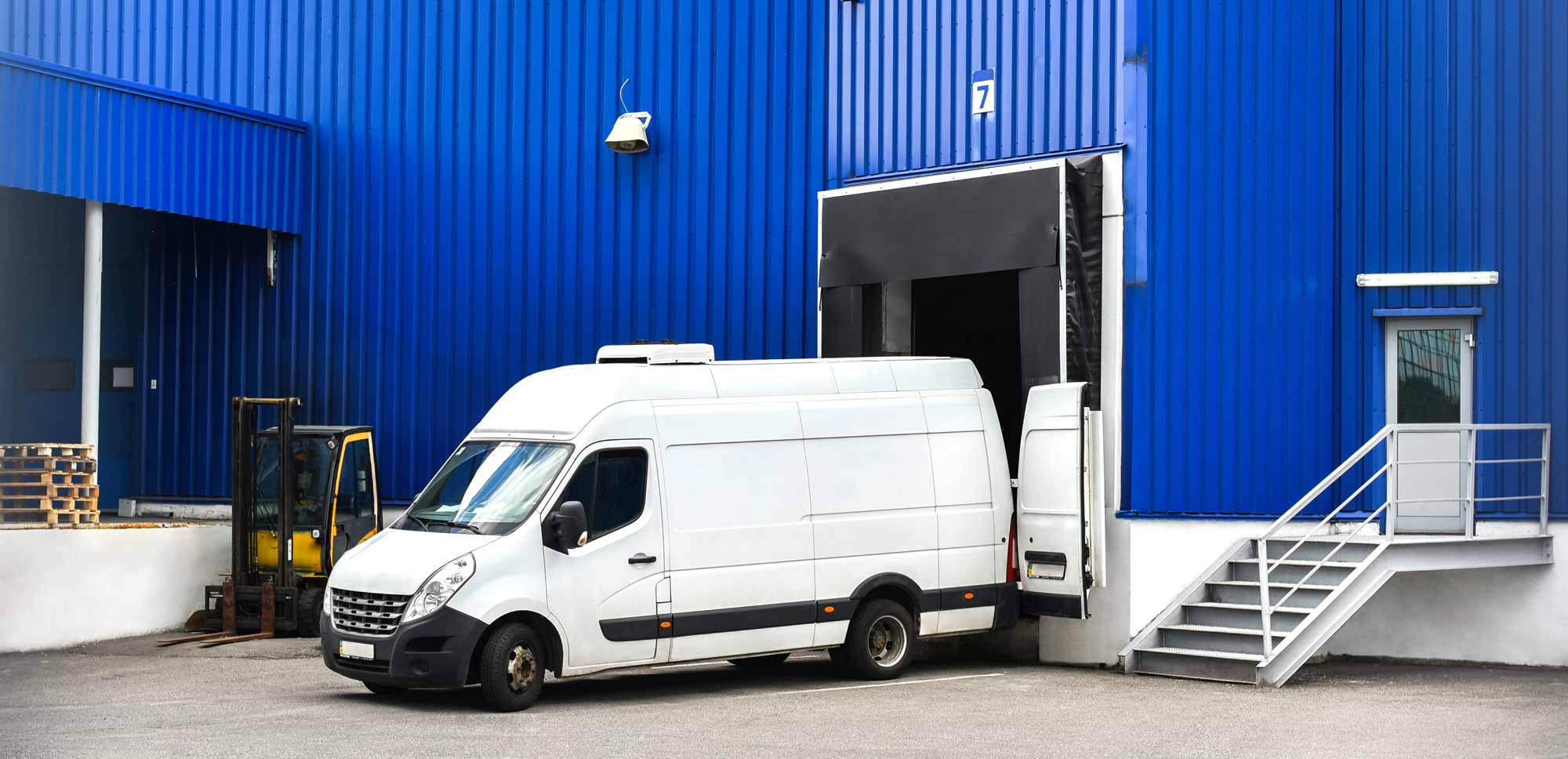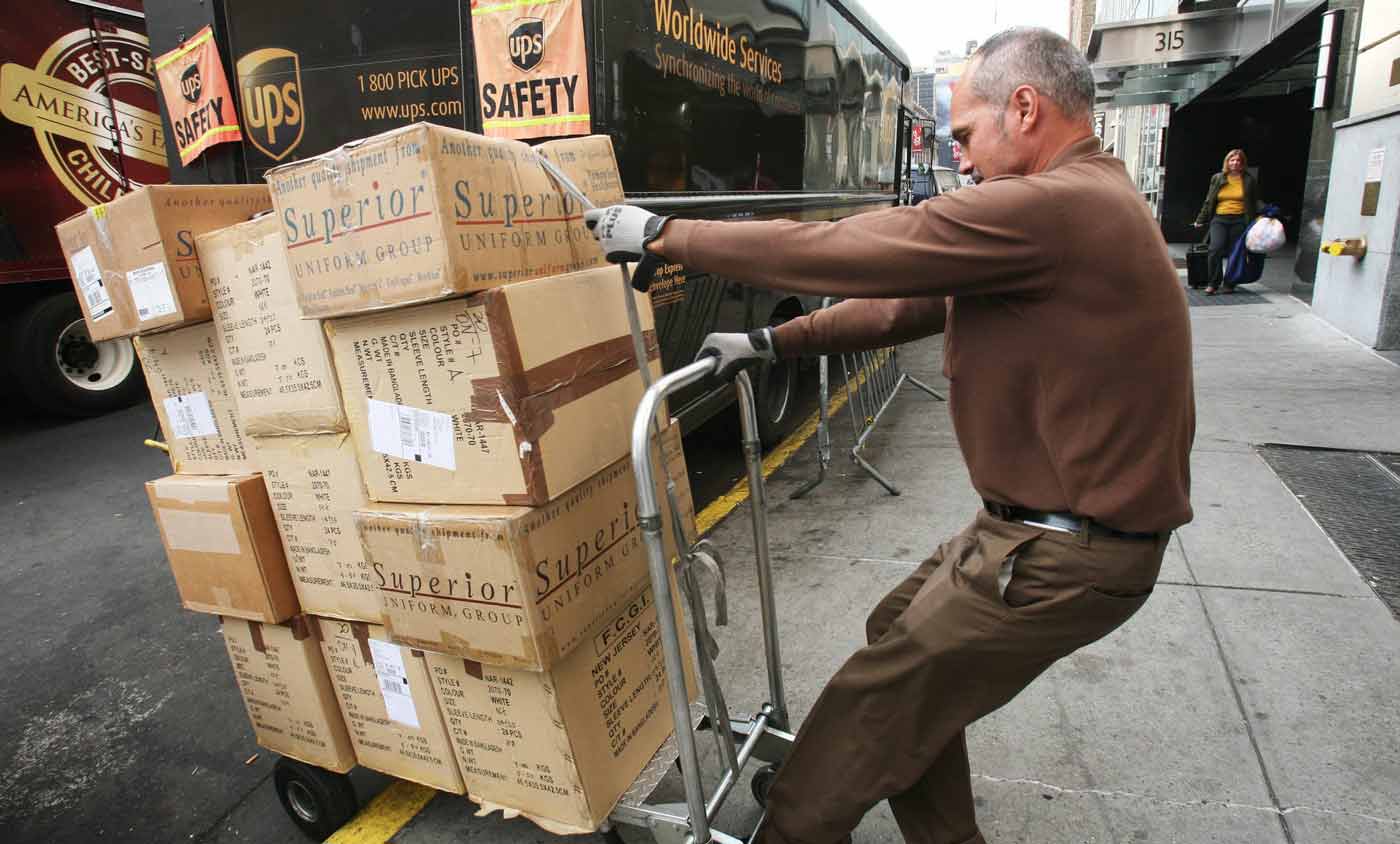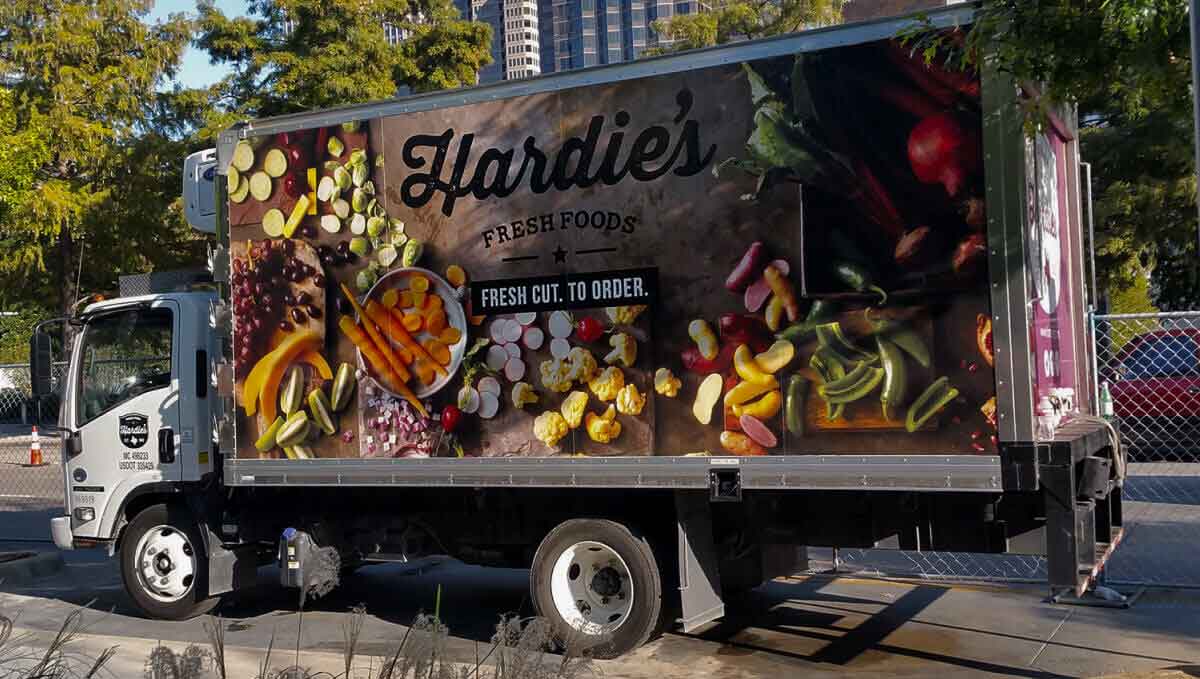It’s Time to Rethink Retail Distribution Strategies
5 min read

You’ve got a popular product that customers want, but before it can fly off the shelves, you have to get it to the stores.
Picking the best retail distribution strategy can feel like a tradeoff between cost and quality. Choosing a traditional shipping carrier might be cheaper but can result in delayed, lost, or damaged merchandise. Same-day couriers provide better service, but the price tag can get higher as the mileage adds up.
Fortunately, there’s a third option that combines quality and cost-efficiency: self-delivery. When you need to get your goods to several locations in a limited geographic area or need flexible delivery days and times, self-delivery is the best retail distribution strategy.
Topics covered in this article:
- What Is Retail Distribution
- Common Retail Distribution Strategies
- The Best Retail Distribution Strategy Is Self-Delivery
- Hardie’s Fresh Foods: Reduced Mileage and Driver-Related Costs
What Is Retail Distribution?
Retail distribution is the process of transporting goods from a warehouse, supplier, or wholesaler to point-of-sale locations or retail stores.
A traditional example of retail distribution would be a furniture store owner who needs to get their products from a warehouse to retail locations or department stores. Or, a florist who purchased flowers from a wholesale market and needs to transport them to their shops. But ecommerce companies might need retail distribution as well if they sell products at short-term retail marketplaces like pop-up stores.
Common Retail Distribution Strategies
The most common types of distribution strategies used by retailers are traditional shipping carriers or couriers, and each comes with their own pros and cons.
Use a shipping carrier

Your standard distribution options are FedEx, UPS, and DHL. The best option for product distribution will depend on the size and weight of the shipment and whether you care more about cost or about reliability.
UPS and FedEx are the top two delivery service companies in the world. UPS excels at domestic ground delivery, while FedEx wins for their global air express service. But they have their downsides, too. Both have package weight limits of 150 pounds — unless you use their freight service — and size limits based on whether the package is being shipped via ground or air. And if you need to get your merchandise to retail stores on a Saturday, you’ll have to pay an additional fee.
DHL specializes in moving products quickly across borders. If’ youre trying to open up your business to new markets and need to get your items from a warehouse in Canada to a U.S. retail store, this would be your best option. They are cheaper for domestic shipping. But since they stopped domestic service in 2008 and only relaunched it in 2018, they have less reach than UPS or FedEx.
Hire a courier

If you need to transport goods quickly and reliably to retail stores or point-of-sale locations in a limited geographic area, then independent courier companies might be the best distribution system for you.
Couriers are also a better choice if your product is fragile, like medical equipment, or food that won’t hold up well in the back of a hot truck. This is because couriers provide the type of personalized service you can’t get from traditional carriers. With a courier, you can get same-day pickup and delivery, and it’s often cheaper than opting for next-day delivery for nearby locations. These cost-savings can apply to packages as small as a letter, but savings really add up as weight increases.
With a courier, the heavier the packages, the greater the savings. Let’s say you needed to get a case of preserves that weighed 40 pounds picked up from Beltsville, MD, and delivered the same day to a specialty food store in Rockville, MD. The cost would be $18.26.
As you can see in the table below, the savings increase for same-day courier delivery for a distance of about 20 miles as the package weight grows. For a 40-pound package, you could even select immediate delivery for about half the cost of the cheapest overnight carrier option.

While couriers are a great delivery strategy for heavy products going to local retail stores, they do have their drawbacks.
A big one — and the one most likely to impact your bottom line — is mileage. Typically, courier delivery costs will increase at a quicker pace based on mileage than carrier shipping. As a general rule, same-day courier distribution method is cheaper than overnight carrier services for shorter distances or heavier weights. If you had multiple retail locations within a state, rather than a city, a courier-based distribution system would add up quickly.
The Best Retail Distribution Strategy Is Self-Delivery
With carriers or couriers, you always risk delayed, lost, or damaged merchandise. That’s why the best strategy for getting your products to multiple retail locations within a geographic area is to build your own in-house distribution network.
The benefits of self-delivery are:
- You cut out the middleman and guarantee your products arrive at retail outlets when your customer base wants them. With both carriers and couriers, you run the risk that delivery delays could cost you sales. With direct distribution you can optimize the entire process, so you won’t give customers a reason to go to Amazon for an alternative.
- You can get your products distributed any day of the week. Saturday and Sunday deliveries aren’t a problem when it’s your own team.
- You improve customer experience by reducing the risk that they get a damaged product. You don’t want your end users to open the box and find broken merchandise. No one is going to take better care of your merchandise than your own people.
- You eliminate unexpected charges. With your own distribution process, you won’t get hit with additional fees for proof of delivery, Saturday delivery, extended-area surcharges, or inside delivery.
- You save money! Even if additional fees from carriers or couriers weren’t an issue, if you have to get product lines to multiple locations in a limited geography — like several cities within a state — self-delivery might be the cheapest option. And route optimization software like OptimoRoute can save you even more money because of improved efficiency.
Use OptimoRoute to streamline distribution for your store
OptimoRoute makes in-house retail distribution simpler by eliminating the need for manual planning and automatically calculating the most efficient routes for your team. With our software, it’s cost-effective for even a small business to use self-delivery for retail distribution.
Our product features reduce overhead and improve efficiency by:
- Routing delivery drivers on the most efficient paths
- Take into account allowed working hours for drivers when creating routes to reduce overtime costs
- Providing estimated time of arrival, so you know when retail outlets can expect deliveries
- Quickly recalculating new routes for maximum efficiency when unexpected circumstances occur
- Balancing workloads among all available drivers
Hardie’s Fresh Foods: Reduced Mileage and Driver-Related Costs Using Optimoroute
When Hardie’s Fresh Foods started using OptimoRoute for distribution, they were able to improve efficiency and significantly decrease their operating costs. As a distributor of local produce, Hardie’s drivers traveled across Texas delivering products to grocery stores as well as restaurants and schools.

Since food distribution is a low-margin industry, Hardie’s wanted to find ways to cut costs, so they turned to OptimoRoute.
By implementing route optimization, Hardie’s began seeing improvements in their daily operations almost instantly. With manual planning, drivers were backtracking, which wasted gas and added mileage. With more efficient planning, Hardie’s reduced mileage by 20% and driver-related costs by 12%. They also improved customer service by increasing their on-time delivery rate from 89% to 94%.
If you need to get your products to retail stores quickly and safely, want flexible delivery days and times, and would like to avoid added fees, you should be self-delivering. In-house retail distribution with OptimoRoute is a cost-efficient solution that provides the highest-quality deliveries. Try OptimoRoute free for 30 days to see how we can help your business.
Try OptimoRoute™ for Free
No installation or credit card required


